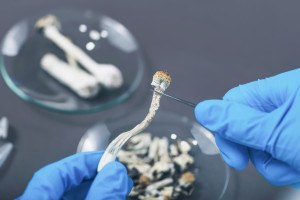An MIT Biologist Is Taking the Secrecy Out of Scientific Research

Nantucket photo by Daniel Piraino on Flickr/Creative Commons
Earlier this month, Kevin Esvelt got something many researchers only dream of: coverage of his latest project in the New York Times. That’s especially noteworthy considering his research hasn’t even begun yet.
“We got New York Times coverage on a project on which no one has even touched a pipette yet,” he says. “To some extent, that’s a reflection of the fact that I don’t think people usually do this.”
“This,” Esvelt says, is being open and transparent about his proposed research, a project that would unleash genetically modified mice onto Nantucket and Martha’s Vineyard, hopefully curtailing the spread of Lyme disease in the process. Unlike many researchers, Esvelt, an evolutionary biologist at MIT, is leaving the fate of his project in the hands of the communities it would affect.
“If we’re going to consider asking communities to volunteer as trial sites for releasing these mice into the environment, then the communities should direct the project from the very beginning,” he says. “I care at least as much about developing a responsive, open method of technology development, where the communities are really in the driver’s seat, as I do about getting rid of Lyme.”
That may be true, but his approach could, indeed, be a novel way of tackling Lyme, a disease that is notoriously difficult to treat and understand.
Esvelt, a key player in the development of CRISPR technology, wants to use mice to attack Lyme from an environmental standpoint. White-footed mice are one of the primary vectors of Lyme—they get the disease when bitten by an infected tick, and ticks get the disease when they bite an infected mouse. The pathogen is passed back and forth, multiplying enough that it eventually reaches other species, such as deer and humans. If the mice couldn’t get Lyme, Esvelt believes, far fewer people and animals would ever contract the disease.
“What if all the mice, instead of being the best reservoir, went to being non-permissive?” he says. “You would, in a single stroke, remove one of the factors that keeps Lyme abundant in the environment.”
As such, Esvelt wants to encode the genomes of white-footed mice with antibodies that would prevent them from contracting Lyme. If enough of those modified mice were released onto the islands, he says, the trait would eventually be passed down to large swaths of the population. If all goes well, that would effectively nip the spread of Lyme in the bud, at least in those contained environments.
Before a single mouse is modified, though, the team is seeking the approval of local ecologists, ethicists, and Nantucket and Martha’s Vineyard residents. Esvelt met with the Nantucket community earlier this month, and will visit Martha’s Vineyard in July. Even if locals are on board, Esvelt says he would first test the project on a small, uninhabited island.
It may seem intuitive to seek the support and trust of communities that stand to benefit—or, if things go wrong, suffer—from an experiment, but it’s fairly novel in a scientific community often criticized for its secrecy. Just two months ago, for example, Harvard faced disapproval for holding a closed-door meeting on genome synthesis.
With his work, Esvelt says he hopes to set a precedent—a precedent for taking science into the community before it ever enters the laboratory.
“[This] would set an example of how things should be done, wherein if communities say no, then the project stops,” Esvelt says. “There are many, many, many cases when we should not use a technology, and to date, our history is not very good in terms of putting things back in the box.”


